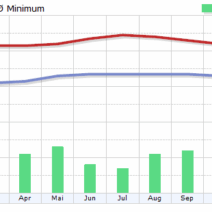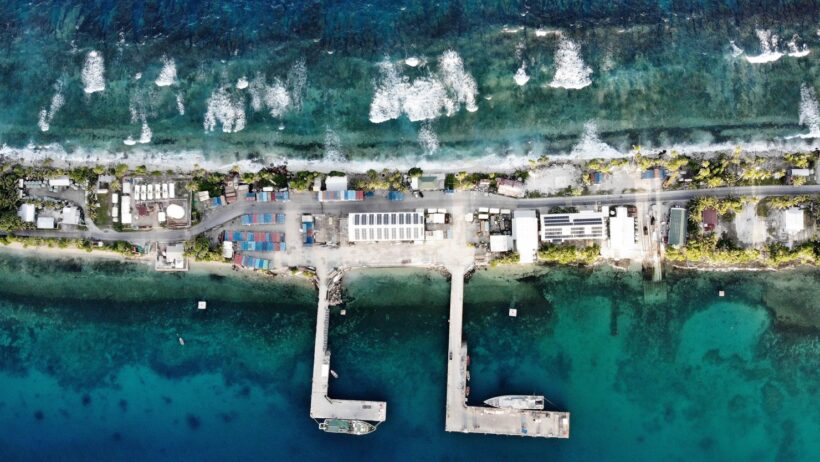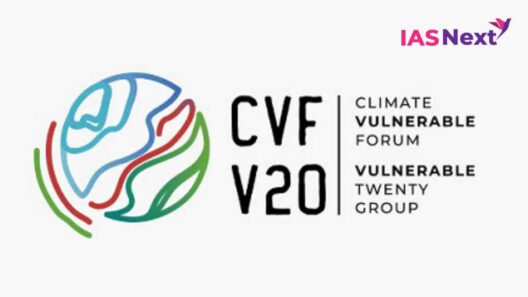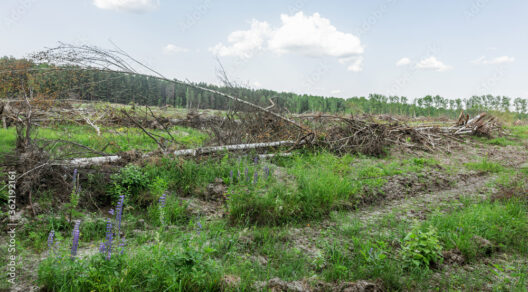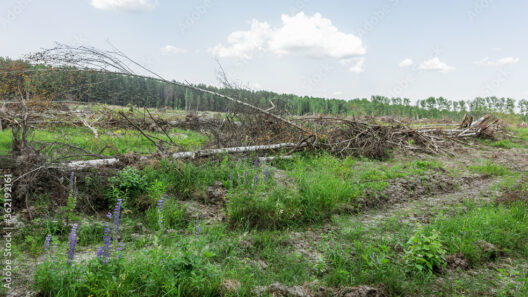Saltwater intrusion is an insidious phenomenon often relegated to the background of discussions surrounding climate change. As global temperatures rise, this occurrence is looming larger with ominous consequences for both ecosystems and human populations. It is essential to unpack and understand this hidden threat, especially against a backdrop of increasing global warming, rising sea levels, and coastal vulnerability.
Understanding Saltwater Intrusion
At its core, saltwater intrusion refers to the process by which saltwater encroaches into freshwater aquifers, threatening the integrity of vital freshwater resources. This phenomenon typically occurs in coastal areas, where the natural balance between freshwater from land and saltwater from the ocean is disrupted. As sea levels rise due to global warming—predicted to increase by 1 to 2 meters by the end of the century—coastal freshwater aquifers are at risk of being overwhelmed by saline waters. The simple act of tapping into these aquifers for unsustainable agricultural practices only exacerbates the situation.
Causes of Saltwater Intrusion
The primary trigger for saltwater intrusion is the rising sea levels attributed to climate change. However, this alarming reality is compounded by anthropogenic activities such as excessive groundwater extraction, land subsidence, and alterations to drainage patterns. When too much freshwater is drawn from aquifers, it creates a vacuum, allowing saltwater to infiltrate these crucial reserves. Cities like New Orleans and coastal towns in Florida serve as stark reminders of just how precarious this balance can be.
In addition, agriculture plays a significant role in exacerbating saltwater intrusion. Farming practices that rely heavily on groundwater from coastal aquifers often lead to over-extraction, catalyzing the encroachment of seawater. This is a bittersweet irony, as agriculture itself is among the sectors most threatened by the very saltwater it contributes to bringing into freshwater resources.
Consequences of Saltwater Intrusion
The ramifications of saltwater intrusion are both far-reaching and severe. Perhaps most critically, it jeopardizes the very source of freshwater that sustains communities, agriculture, and ecosystems. With saline waters contaminating aquifers, drinking water becomes less accessible and less safe. As local populations rely predominantly on groundwater for drinking and irrigation, diminishing supplies and rising salinity can trigger both health crises and food insecurity.
Furthermore, ecosystems along coastlines are at risk. Wetlands and estuaries, vital for biodiversity, naturally filter water and provide habitats for countless species. The encroachment of saltwater can alter soil composition and lead to the death of freshwater plants and increase salinity levels in sensitive habitats. A reduction in biodiversity not only erodes ecological stability but can also diminish the resilience of coastal zones against other environmental stresses like storms and erosion.
The Socioeconomic Implications
The socioeconomic implications of saltwater intrusion are profound. Communities reliant on agriculture may face decreasing crop yields due to saline soil and reduced freshwater access. Industries such as fisheries, which depend on the health of coastal environments, find their viability threatened. These changes can induce migration, leading to the displacement of entire populations and the emergence of climate refugees—individuals forced to leave their homes due to environmental factors. This migration often creates a cascading effect on urban areas, straining resources and complicating social dynamics.
Mitigation Strategies
Responses to combating saltwater intrusion must be multifaceted. Innovative solutions include sustainable water management practices aimed at preserving freshwater resources. Improvements in agricultural methods, such as using salt-tolerant crops or implementing techniques like drip irrigation, can reduce the demand on aquifers. Effective zoning laws can also help protect sensitive coastal areas from overdevelopment, which exacerbates land subsidence and reduces the natural barriers against seawater.
Governments and communities must invest in research and monitoring to better predict and respond to the ongoing challenges posed by saltwater intrusion. Understanding trends in groundwater levels and assessing the salinity of local water sources is vital. Educating stakeholders—ranging from local farmers to policymakers—will promote awareness and encourage collaborative efforts in managing water resources efficiently.
Community Engagement and Adaptation
The involvement of local communities in decision-making processes is paramount. As the stewards of their environments, local knowledge and experiences can serve as invaluable assets in devising adaptive strategies. Establishing community gardens, investing in rainwater harvesting techniques, and strengthening local water management strategies can lay the groundwork for resilience.
Adaptation is not merely about utilizing technology or imposing solutions; it also involves fostering a culture of sustainability in urban planning and development. By prioritizing green infrastructure and preserving natural ecosystems, cities can enhance their resilience against incursions of saltwater and the unpredictable nature of climate change.
An Urgent Call to Action
Saltwater intrusion encapsulates a broader narrative around climate change—a reminder that its effects are not always visible yet profoundly impactful. By understanding the complexities of this phenomenon, society can begin to mobilize and forge a path towards sustainability and resilience. Awareness is the first step to action. Whether it be through policy shifts, community engagement, or individual efforts, the battle against saltwater intrusion must become part of the larger climate dialogue. The threat is real, but so too is the potential for innovative solutions, collaborative efforts, and united communities committed to safeguarding their freshwater resources against the encroaching tide.
